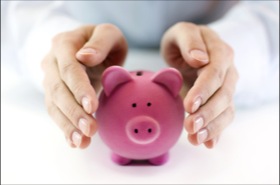
While education-specific savings products are great when you're expecting, there are also a plethora of other future benchmarks for which to plan. Launching a young person into adult life with a house down payment, a security deposit for an apartment, or a reliable car to commute to their first job are all goals that conscientious parents can't overlook. Using certificates of deposit to set aside money for these future expenditures is a savvy financial move. Interest rates, terms, and avoiding escheatment are all important factors.
Interest Rate ShoppingIn order to get the best return on your money, you'll want to look for the highest interest rates possible. Use the internet to shop around. You may also want to approach the financial institution where you do most of your banking. Many companies offer a higher interest rate if they also hold your checking, savings, mortgage, or home equity accounts.
The TermsCertificates of deposit are sold in specify time increments ranging from a low of one week to ten years or more. Usually, agreeing to a longer term will net you a higher interest rate. You will have to consider whether or not you believe rates will rise or fall in the future and make your plans accordingly. You wouldn't want to be locked into a ten-year certificate only to watch rates rise. Furthermore, you will want to choose a term length that fits your future needs. If you want to set aside funds for a car at high school graduation for a newborn, a twenty-year certificate of deposit will not help.
Avoiding EscheatmentEscheatment occurs when you leave money sitting in the bank so long that it is considered abandoned and is turned over to the state. To avoid this, create a careful record of where your funds are kept and keep in contact with them. Each state has its own length of time used for escheatment, so be sure to check on your specific state for more details.
By planning ahead for major expenses, your child's financial future will be more secure. Using certificates of deposit to meet your goals works well as long as you pay close attention to the interest rates, the terms, and are sure that your accounts are not escheated.
What else can I help you with?
Where could a person find the interest rates for certificates of deposit?
A person could the interest rates for certificates of deposit by using an interest rate calculator where the amount of the deposit is entered into an equation and the end result will be how much interest will be earned for the term you want.
What is sentence using word deposit?
I decided to deposit my savings into a high-interest account to earn more over time. After carefully considering my options, I made the deposit at the bank this morning. It felt good to secure my funds for future use.
How can I deposit money into my checking account?
You can deposit money into your checking account by visiting a bank branch, using an ATM, or using mobile banking apps to deposit checks electronically.
How can you deposit nickel as a coating using nickel chloride?
You can deposit nickel as a coating by using nickel chloride and a technique known as electroplating.
Can I deposit a check that was emailed to me?
Yes, you can deposit a check that was emailed to you by using a mobile banking app that allows for remote check deposit.
How do you make a deposit to bank night deposit box?
At night and on weekends, deposit your receipts in the through-the-wall night deposit box, using the access key issued to you.
Can you deposit a copy of a check?
Yes, you can deposit a copy of a check by using a mobile banking app to take a picture of the check and submit it for deposit.
What are the disadvantages of using direct deposit?
One disadvantage of using direct deposit is that it may be difficult to access funds immediately in case of errors or disputes.
Can you deposit a check by taking a picture of it?
Yes, you can deposit a check by taking a picture of it using a mobile banking app that offers remote deposit capture.
How deposit important to a bank?
deposit is like food for banking body to keep it operative by way of using it .
What is the difference in counter deposit and deposit?
A counter deposit is made using a blank deposit slip furnished by the bank - the depositor has to write in their own name and account number. A deposit is typically made with a pre-printed deposit slip that the depositor brings to the bank with them.
Can I mobile deposit an emailed check?
Yes, you can typically mobile deposit an emailed check by using your bank's mobile app to take a picture of the check and submit it for deposit.
